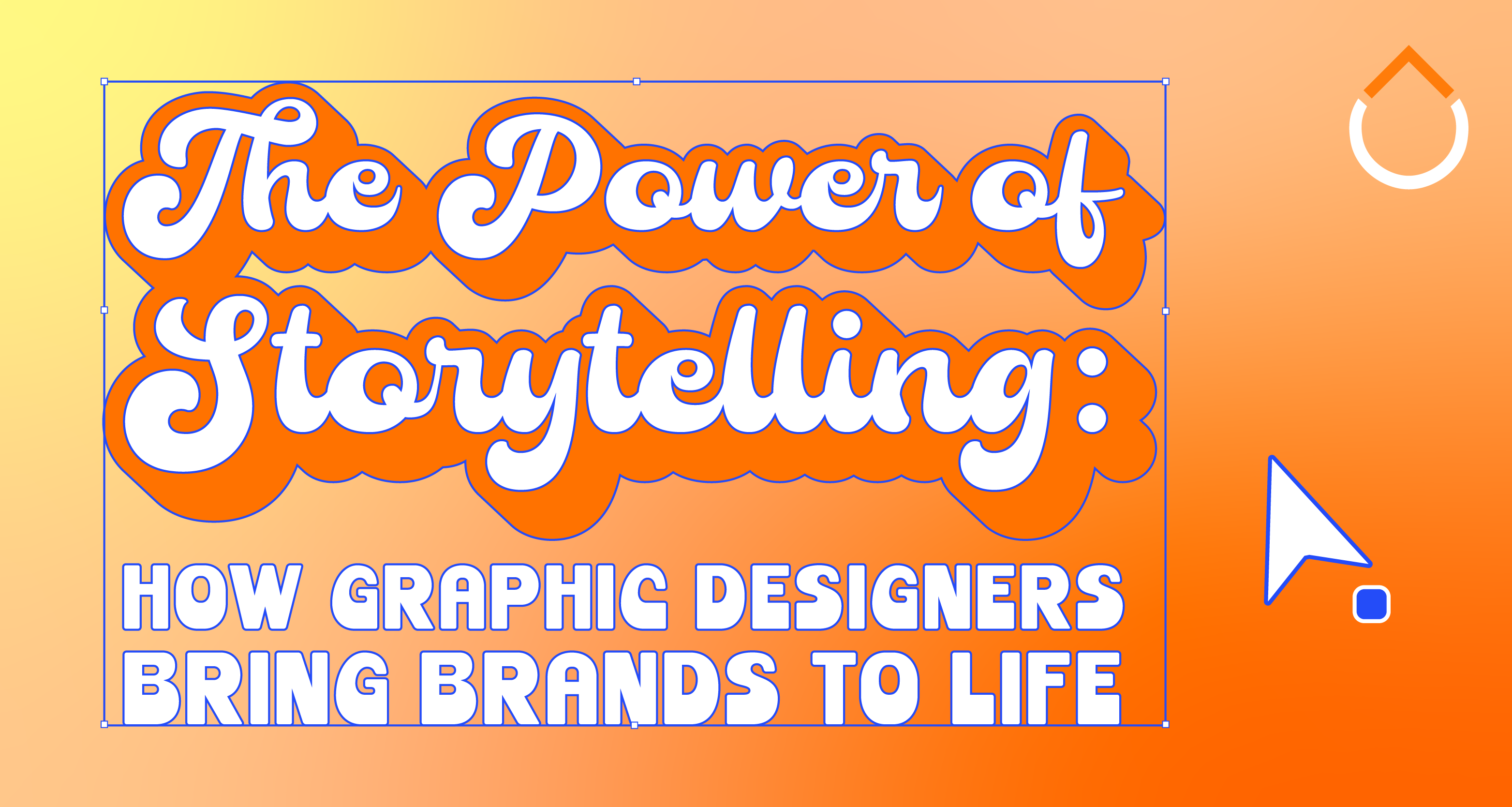News

The Power of Storytelling: How Graphic Designers Bring Brands to Life
Storytelling is an essential part of every brand. It’s your opportunity to focus on a narrative that connects your brand to its audience.
And what better way to connect than through visual elements?
Incorporating storytelling into design is poised to overhaul the way companies approach their branding. Using design for brand storytelling allows companies to communicate in a format that people are naturally drawn to, which is visual information. Design elements such as images and graphics can quickly grab someone’s attention and convey a message in a way that text alone cannot.
So how does this role of storyteller come into focus for graphic designers?
A good graphic designer can take a complex story and distill it down to its essential elements, conveying the message in a way that is both visually appealing and easy to understand.
There are several different ways to approach storytelling in design, even beginning at the early planning stages. Most importantly however, the story a design tells will need to come across as clear and consistent. Since every brand has a unique story, a graphic designer must utilize several elements to create standout material that resonates with the desired audience.
Below we outline 3 graphic design elements that when executed correctly, can help drive the emotional bond between your brand and its audience.
Consistency
Consistency is key to building a strong brand identity. Using consistent design elements throughout all of your branded materials can create a cohesive and memorable brand experience for your audience. It allows people to quickly identify and remember your brand among a sea of competitors, which keeps you top of mind in a way that reinforces trust and credibility. People will know what to expect from your brand, which creates a sense of comfort and avoids any confusion or uncertainty.
Read about Martin Johnson's attempt to set the fastest known time on the 184-mile path to the source of the River Thames at https://t.co/t0BapuQYnO.
Photos: Holly-Marie Cato, Phil Young, Matt Kay pic.twitter.com/igyTAexLnd
— Patagonia (@patagonia) February 15, 2023
Patagonia, the clothing company that prides itself on being an environmentally conscious brand, uses earthy tones and eco-friendly imagery across its marketing materials. When these design elements are repeated across different touchpoints, the brand’s message is reinforced and strengthened.
Imagery
Whether it’s photography or an illustration, the visual elements you use throughout your branded materials can evoke different emotions, all while reinforcing your mission and values. That’s why it’s important to select the right imagery in an effort to avoid any miscommunication.
Tech company Dell does a good job of utilizing imagery effectively. Dell places an emphasis on the users of their products instead of the products themselves. Their mission is to create technology that drives human progress, and their use of lifestyle photography displays this well. For example, they focus on including photos that showcase people pursuing what’s important to them, highlighting the spirit and vitality of the Dell brand. In reflection to their values, they include people that appear genuinely honest and authentic.
https://twitter.com/DellTech/status/1626247289160232960?cxt=HHwWgMCzteLSy5EtAAAA
Visual hierarchy
Visual hierarchy is the arrangement of elements to show their order of importance. Any designed object has a visual hierarchy. What you see and understand first, second, third, and so on. This means that the most important information about your brand should ideally be the largest and most prominent, helping viewers to focus on the most critical part of your message.
That intentional viewing order tells a story, communicates a message, and may even convey a mood or feeling. Visual hierarchy can be created by manipulating 5 key concepts: scale, color contrast, white space, format, and position. If your visual hierarchy is off, then your viewers will likely miss important information or be confused by your overall message.
Consumers are constantly bombarded with information, so a well-designed visual hierarchy can help leave a lasting impression.
For example, Wayfair.com’s homepage offers up too much information. This overload of information can make users feel paralyzed with indecision. This is because the website lacks visual hierarchy. The site’s elements are almost all the same size and color. Whether customers are looking for mattresses, chairs, rugs, or other home products, there is too much going on, which may cause the user to leave the website and continue their shopping journey elsewhere.
For example, Wayfair.com’s homepage offers up too much information. This overload of information can make users feel paralyzed with indecision. This is because the website lacks visual hierarchy. The site’s elements are almost all the same size and color. Whether customers are looking for mattresses, chairs, rugs, or other home products, there is too much going on, which may cause the user to leave the website and continue their shopping journey elsewhere.

When it comes to storytelling in graphic design, it’s clear that when properly utilized, it can help engage and connect with your audience effectively.
Storytelling is a powerful vehicle for conveying narratives and emotions in a visual form.
You can tell engaging stories with design in many ways, ranging from developing outstanding user journeys, to incorporating consistent aesthetic elements in your social media graphics.
Your ultimate goal should be to connect your story and brand in a visual way that your audience will really resonate with.
So make sure to keep these elements in mind when thinking about your brand’s identity and how it’s visually communicated with your audience.